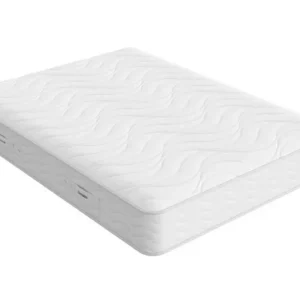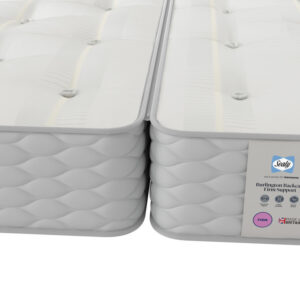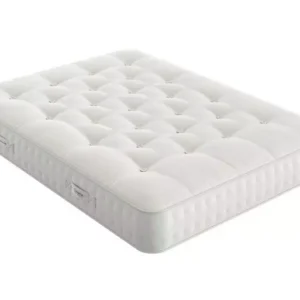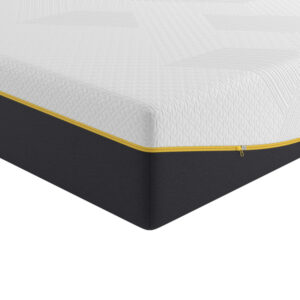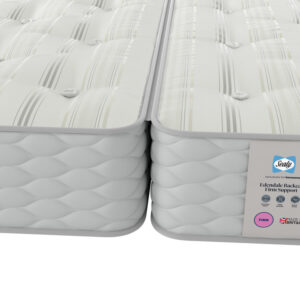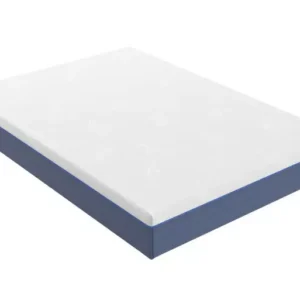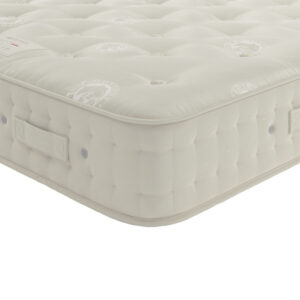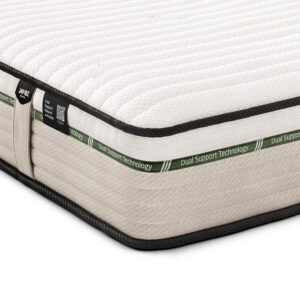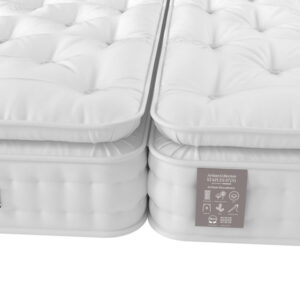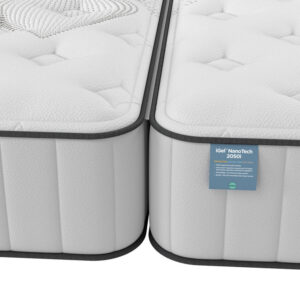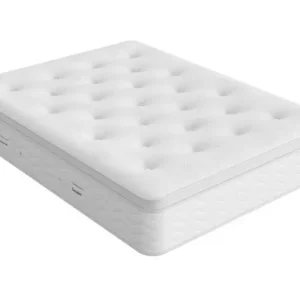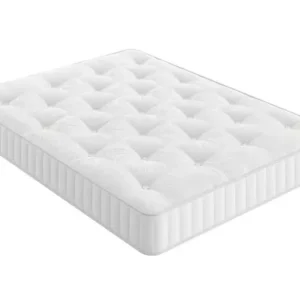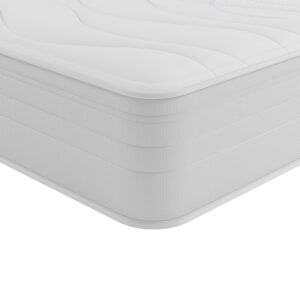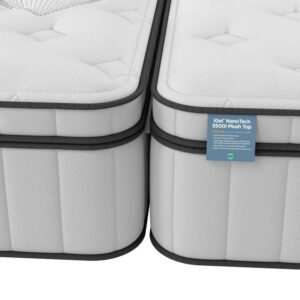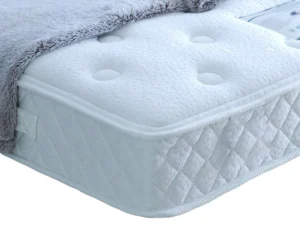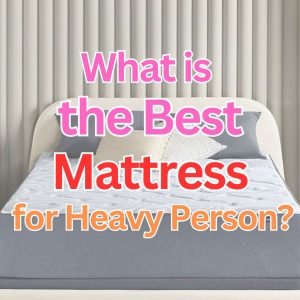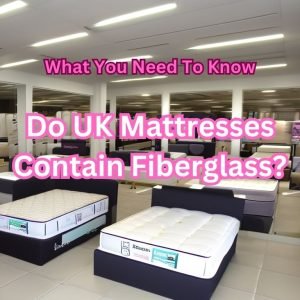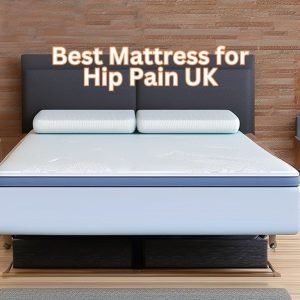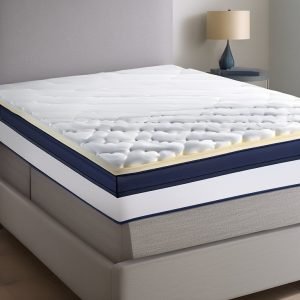Fiberglass, also known as glass wool, is a material that has recently sparked concern and debate around its usage in mattresses. With rising reports of fiberglass mattress contamination primarily in the US, many in the UK are left worrying – do mattresses here contain this potentially harmful material too?
Let’s break down what exactly fiberglass is, why it’s used in some mattresses, the associated health risks, and ultimately which mattress brands you can trust when shopping in the UK.
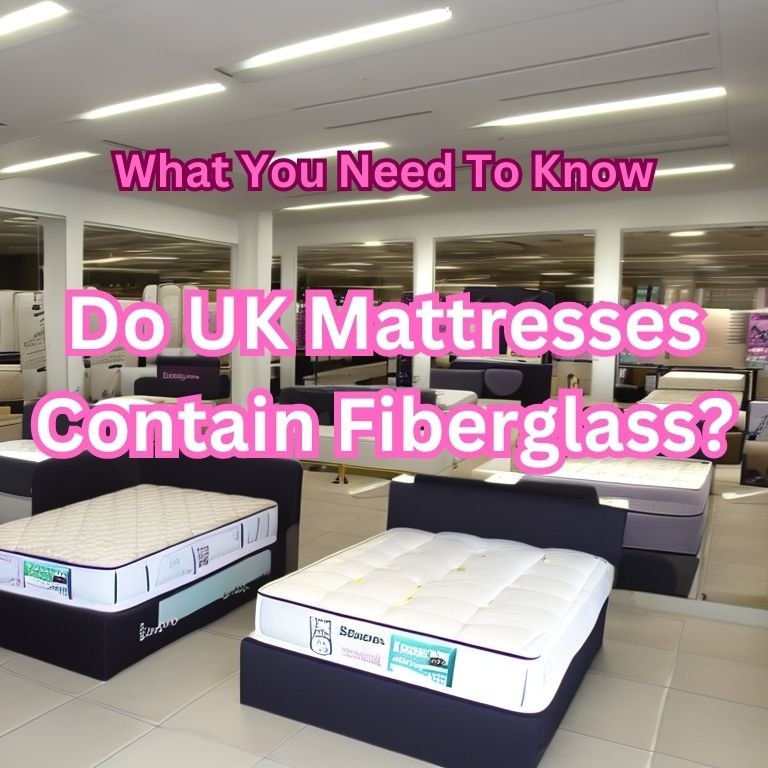
What is Fiberglass?
Fiberglass, also referred to as glass wool, is a man-made vitreous fiber made of glass. It is a lightweight, extremely fine insulator that can be produced in either blankets or loose fiber.
Fiberglass is valued for its thermal insulating properties and flame retardancy. It is also relatively inexpensive and easy to produce.
Why is Fiberglass Used in Some Mattresses?
There are two primary reasons fiberglass may be used in the production of some mattresses:
- As a flame retardant – Fiberglass is highly effective at reducing flammability and slowing fire growth. Mattresses often require flame-retardant components to meet specific safety standards and regulations.
- As insulation – The thermal insulating properties of fiberglass help regulate temperature. This allows mattresses to remain cool in warm environments and warm in cold environments.
Essentially, fiberglass enables mattresses to meet critical safety and comfort criteria – all at a low cost to manufacturers.
Is Fiberglass Safe in Mattresses?
While encased between strong fabrics or layers, fiberglass within a mattress is generally considered safe and should not pose any health risks.
However, fiberglass particles can be extremely dangerous if inhaled or exposed to the skin. Even short-term exposure may result in irritation and other health effects.
When misused in mattresses, fiberglass contamination is a very real concern. Mattress covers can tear, zippers make removal too easy, and particles invisible to the naked eye can escape and circulate in the air.
Documented health effects from fiberglass exposure include:
- Skin irritation, rashes, blisters
- Eye irritation
- Coughing, congestion
- Shortness of breath
- Asthma exacerbation
Severe exposure has even been linked to cancer. Needless to say, caution is warranted when fiberglass may be present.
Do UK Mattresses Contain Fiberglass?
The good news is most major mattress manufacturers in the UK do not use fiberglass. Flame retardancy and insulation requirements are met using alternative materials and treatments.
For instance, many quality foam mattresses like those from Eve, Simba, and Emma integrate fire retardant components directly into their foam layers during the manufacturing process. Others may use inherently fire-resistant materials like natural latex in place of fiberglass.
That said, there are some exceptions. Cheaper, lower-quality mattresses, particularly those manufactured outside the UK, may still contain fiberglass.
Check our Latest products!
How to Check if Your Mattress Has Fiberglass
If you want to confirm whether your mattress contains fiberglass, here are some tips:
- Read the label – Check all tags and labeling for any mention of “fiberglass” or “glass wool”.
- Check the cover – Particularly with zip-on mattress covers, look for fiberglass woven between fabrics that may appear shiny or glittery.
- Contact the manufacturer – Don’t hesitate to inquire directly with the company if it’s unclear from the product labeling.
- Consider the price – Extremely cheap mattresses more commonly use fiberglass to cut costs. Higher-quality options typically avoid it.
- Buy certified organic – Opting for materials like organic wool, cotton, latex, etc. guarantees no fiberglass.
What to Do if You Have a Fiberglass Mattress
If you discover your mattress contains fiberglass, here are a few tips:
- Never remove protective covers/layers exposing the fiberglass.
- Use a mattress protector for extra encapsulation.
- Vacuum regularly with a HEPA filter to capture any escaped particles.
- If exposure has occurred, thoroughly wash skin and clothes to remove particles.
- If severe symptoms develop, seek medical help immediately.
- Consider replacing the mattress with a fiberglass-free alternative when possible.
Safe, High-Quality Mattress Brands in the UK
To avoid any concerns around fiberglass, shop with reputable mattress brands that avoid its use entirely. Here are some top options to consider in the UK:
- Emma
- Eve
- Simba
- Brook + Wilde
- Dreamcloud
- OTTY
- Nectar
- IKEA (UK models only)
Focus your search on brands that use certified foams, organic materials like cotton and wool, or natural latex. While pricier, you avoid any of the risks associated with fiberglass.
The Bottom Line
Fiberglass contamination from mattresses is a very real health hazard, as evidenced by the uproar in the US. Thankfully, the majority of mattresses sold in the UK are produced without fiberglass components whatsoever.
By performing due diligence – reading labels, contacting manufacturers, and shopping reputably – UK consumers can confidently find quality, fiberglass-free mattresses. Your health and safety during such an important activity, sleep, should never be compromised.
Alternatives to Fiberglass for Flame Retardancy
Given the potential dangers of fiberglass, what options do mattress manufacturers have to meet flammability standards without compromising health? There are several effective fiberglass alternatives:
Fire Resistant Barrier Fabrics
Specialty flame-resistant fabrics made of materials like fiberglass-free modacrylic can form protective barriers around mattress components. These fire-resistant shields block heat and flames from penetrating inner materials.
Organic Cotton
While natural cotton on its own is flammable, certain weaving and treatment techniques can render cotton fabrics fire-resistant. Mattress tickings made of organic cotton can achieve necessary fire safety levels.
Wool
Like cotton, wool can also be manufactured into fire-resistant fabrics for mattresses. Wool is naturally more flame resistant than other textiles and enhances fire protection when used in mattress covers and as a quilt layer.
Fire Retardant Chemicals
Some mattresses utilize chemical flame retardants instead of physical fire barriers. However, many common retardants are linked to health hazards, so natural plant-based alternatives like hydrated silica are safer options.
Latex
Natural latex foam derived from rubber trees demonstrates impressive fire-resistant properties on its own. Quality latex mattresses easily achieve fire safety certifications without any fire retardant additives.
Intumescent Materials
Intumescents are substances that expand in reaction to heat, forming a protective char barrier. Graphite, hydrates, and ammonium polyphosphate are common intumescents used for fire safety.
Health Risks of Chemical Flame Retardants
Although added as a safety measure, chemical flame retardants also demonstrate concerning health effects:
- Endocrine disruption, hormone imbalances
- Neurological impacts
- Reduced IQ in children
- Cancer
- Genetic mutations
Such health hazards demonstrate the importance of using safer physical fire barriers like modacrylic fabrics rather than chemical treatments.
Certifications to Look For
When shopping for a fiberglass-free mattress made without harmful chemical flame retardants, look for these certifications:
- GOTS (Global Organic Textile Standard)
- GOLS (Global Organic Latex Standard)
- OEKO-TEX Standard 100
- GREENGAURD Gold
- CertiPUR-US
Reputable certifications validate that mattresses are produced with health top of mind.
In Conclusion
Mattress buyers in the UK can rest assured that fiberglass-free, non-toxic options are widely available from quality manufacturers. Seeking out certified materials, intumescent barriers, and inherently fire-resistant fabrics allows for safety without sacrificing health.
Check our Products on Sale!
FAQs on Fiberglass in Mattresses
How do I know if my mattress contains fiberglass?
You can check for fiberglass in a few ways:
- Examine the law tag, manufacturing labels, and product descriptions for any mention of fiberglass, glass wool, or glass fiber
- Look for a loose fiberglass layer inside the mattress, usually between the cover and foam/padding
- Contact the manufacturer directly to inquire about materials
- Assess if the mattress was very inexpensive, as fiberglass is often used as a cost-cutting measure
Do UK mattresses have fiberglass?
Most major mattress brands sold in the UK do not contain fiberglass including Emma, Eve, Simba, Nectar, and IKEA UK models. Lower quality or non-UK mattresses are more likely to use fiberglass. Always double-check with manufacturers.
Do purple mattresses have fiberglass in them?
Early versions of the Purple mattress were reported to contain fiberglass. However, Purple has indicated that since 2018 all of their mattresses have been redesigned and produced without fiberglass.
Is it OK to buy a mattress with fiberglass?
It’s not recommended. While fiberglass locked inside a mattress may pose little risk, any improper sealing or tears and deterioration over time can lead to dangerous exposure. UK consumers have much safer, fiberglass-free options widely available.
What does fiberglass in a mattress look like?
Fiberglass in mattresses may resemble a thin, see-through layer woven with loose, shiny fibers visible between other layers. It may also appear as a solid layer of fabric or batting permeated with glittery fragments of glass.
Do spring mattresses have fiberglass?
Traditional spring mattresses are unlikely to contain loose fiberglass stuffing. However, cheaper varieties could utilize fiberglass in covers or insulation layers. Quality pocket spring mattresses avoid fiberglass altogether.
Fiberglass mattress IKEA?
IKEA mattresses sold in the UK do not contain fiberglass fillers or covers. However, some mattresses made for the US IKEA market were found to contain fiberglass, so check the country of origin.
Do Silentnight mattresses have fiberglass?
Silentnight does not appear to use fiberglass in any of its mattress ranges. They utilize fire-retardant fabrics and foams instead.
Do Emma mattresses have fiberglass?
Emma has confirmed that none of their foam mattresses contain any fiberglass elements. They use fire-resistant polyurethane foam and other materials to meet safety standards.
Do Dormeo mattresses have fiberglass?
Dormeo indicates their mattresses are certified free from harmful substances, suggesting they avoid fiberglass. Contact them directly for explicit confirmation.
Do all mattresses have fiberglass?
Not. The majority of quality mattress manufacturers avoid fiberglass entirely. Reputable brands instead use fire-resistant fabrics, inherently non-flammable foams, and materials, or safer fire barrier treatments.
Do Simba mattresses have fiberglass?
Simba mattresses are certified by CertiPur, Oeko-Tex, and other standards indicating no fiberglass or other harmful materials are used. The company has confirmed no fiberglass is present.
Disclaimer: This article provides general information about fiberglass in mattresses and is not medical or legal advice. All health and safety guidance should be carefully considered in conjunction with instructions from medical professionals. Brand names mentioned are used for illustration purposes only and do not represent product endorsements. As materials and practices evolve, consumers should independently verify any claims made by manufacturers. The article creator and publisher disclaim any liability from the use of this article.

